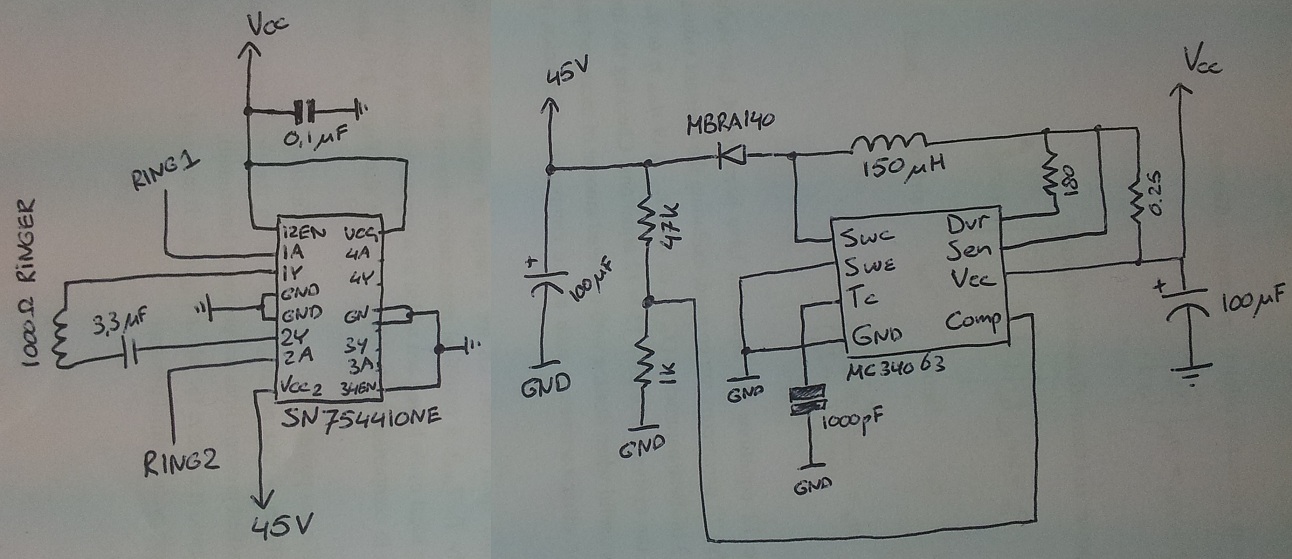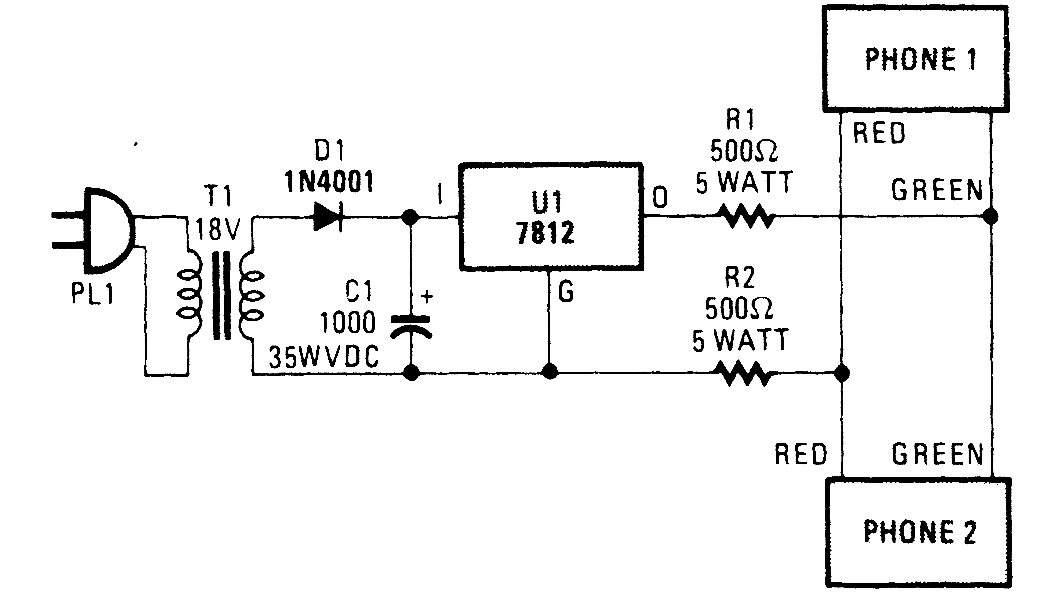
MUSICAL TELEPHONE RINGER

The core component of the circuit is IC1, the AY-3-1350 melody synthesizer IC from General Instrument. IC2 is a TCM1512 telephone ring detector IC powered by the telephone line. The circuit operates when IC2 detects a ring pulse on the telephone line. The detector rectifies the ring signal internally and outputs a voltage to relay RY1, a single-pole single-throw (SPST) reed-type relay with 5-volt contacts, causing its contacts to close. This action pulls pin 12 (the ON/OFF control) of IC1 low (logic 0), prompting it to output a signal—the selected tune—to the transistor amplifier Q2. The amplified signal is then sent to the speaker. The melody continues to play until the tune is finished, at which point IC1 reverts to standby mode, or until the phone is taken off the hook. Lifting the handset interrupts the ring pulses to IC2, which opens RY1. When the relay contacts open, pin 12 of IC1 goes high, returning the circuit to standby mode, ready for the next incoming phone call.
The circuit design centers around two integrated circuits: the AY-3-1350 and the TCM1512, each serving distinct functions essential for melody playback upon incoming phone calls. The AY-3-1350 is a dedicated melody synthesizer capable of generating various tunes through pre-defined sound patterns. It is controlled by an external voltage signal, which in this case is provided by the relay operation initiated by the TCM1512.
The TCM1512 operates by detecting the AC ring signal typically present on telephone lines. This IC is designed to recognize the specific frequency and voltage levels associated with ringing. Upon detection, it converts the AC signal into a usable DC voltage, which activates the relay RY1. The use of an SPST reed relay allows for minimal power consumption and quick switching, making it suitable for low-voltage applications like this circuit.
When the relay closes, it creates a path that pulls down the control pin of the AY-3-1350, enabling the melody generation. The output from IC1 is then amplified by transistor Q2, ensuring that the sound is sufficiently loud when played through the speaker. The circuit is designed to seamlessly transition between active and standby modes, effectively managing power consumption and ensuring that the melody only plays in response to incoming calls.
The operation concludes when the melody finishes or when the phone is lifted off the hook. Lifting the handset interrupts the ring signal, causing the relay to open and the AY-3-1350 to return to its standby state. This design not only provides an auditory alert for incoming calls but does so with efficiency and responsiveness, making it an effective solution for enhancing traditional telephone systems.The heart of the circuit is IC1, General Instrument`s AY-3-1350 melody-synthesizer IC. IC2 is a TCM1512 telephone ring detector IC that is powered by the telephone line. The circuit`s operation begins when IC2 senses a ring pulse on the telephone line. The detector (internally) rectifies the ring signal and then outputs a voltage to relay RY1 (an SPST reed-type relay with 5 volt contacts), causing its contacts to close. That pulls pin 12 (the ON/OFF control) of IC1 low (logic 0 ), causing it to output a signal-the selected tune-to transistor amplifier Q2. The amplified signal is then fed to the speaker. The melody continues to play either until the tune is finished (at which time IC1 returns to the standby mode), or until someone takes the phone off the hook.
Taking the phone off the hook dis-continues the ring pulses to IC2, which opens RY1. When the relay contacts open, pin 12 of IC1 goes high, returning the circuit to the standby mode to wait for the next incoming phone call. 🔗 External reference
The circuit design centers around two integrated circuits: the AY-3-1350 and the TCM1512, each serving distinct functions essential for melody playback upon incoming phone calls. The AY-3-1350 is a dedicated melody synthesizer capable of generating various tunes through pre-defined sound patterns. It is controlled by an external voltage signal, which in this case is provided by the relay operation initiated by the TCM1512.
The TCM1512 operates by detecting the AC ring signal typically present on telephone lines. This IC is designed to recognize the specific frequency and voltage levels associated with ringing. Upon detection, it converts the AC signal into a usable DC voltage, which activates the relay RY1. The use of an SPST reed relay allows for minimal power consumption and quick switching, making it suitable for low-voltage applications like this circuit.
When the relay closes, it creates a path that pulls down the control pin of the AY-3-1350, enabling the melody generation. The output from IC1 is then amplified by transistor Q2, ensuring that the sound is sufficiently loud when played through the speaker. The circuit is designed to seamlessly transition between active and standby modes, effectively managing power consumption and ensuring that the melody only plays in response to incoming calls.
The operation concludes when the melody finishes or when the phone is lifted off the hook. Lifting the handset interrupts the ring signal, causing the relay to open and the AY-3-1350 to return to its standby state. This design not only provides an auditory alert for incoming calls but does so with efficiency and responsiveness, making it an effective solution for enhancing traditional telephone systems.The heart of the circuit is IC1, General Instrument`s AY-3-1350 melody-synthesizer IC. IC2 is a TCM1512 telephone ring detector IC that is powered by the telephone line. The circuit`s operation begins when IC2 senses a ring pulse on the telephone line. The detector (internally) rectifies the ring signal and then outputs a voltage to relay RY1 (an SPST reed-type relay with 5 volt contacts), causing its contacts to close. That pulls pin 12 (the ON/OFF control) of IC1 low (logic 0 ), causing it to output a signal-the selected tune-to transistor amplifier Q2. The amplified signal is then fed to the speaker. The melody continues to play either until the tune is finished (at which time IC1 returns to the standby mode), or until someone takes the phone off the hook.
Taking the phone off the hook dis-continues the ring pulses to IC2, which opens RY1. When the relay contacts open, pin 12 of IC1 goes high, returning the circuit to the standby mode to wait for the next incoming phone call. 🔗 External reference





